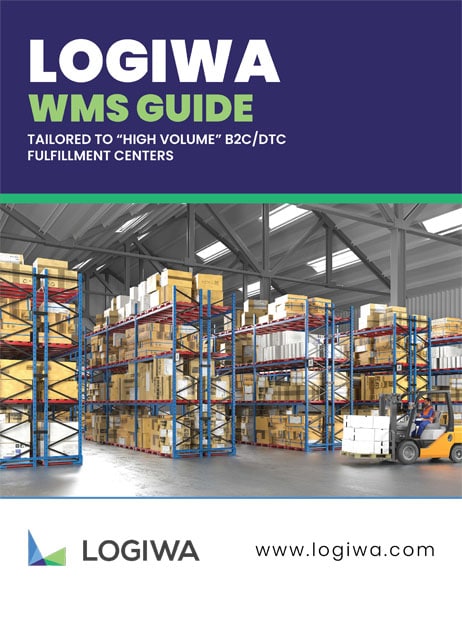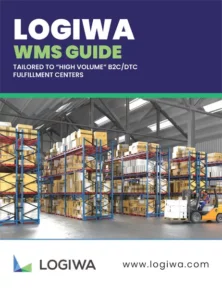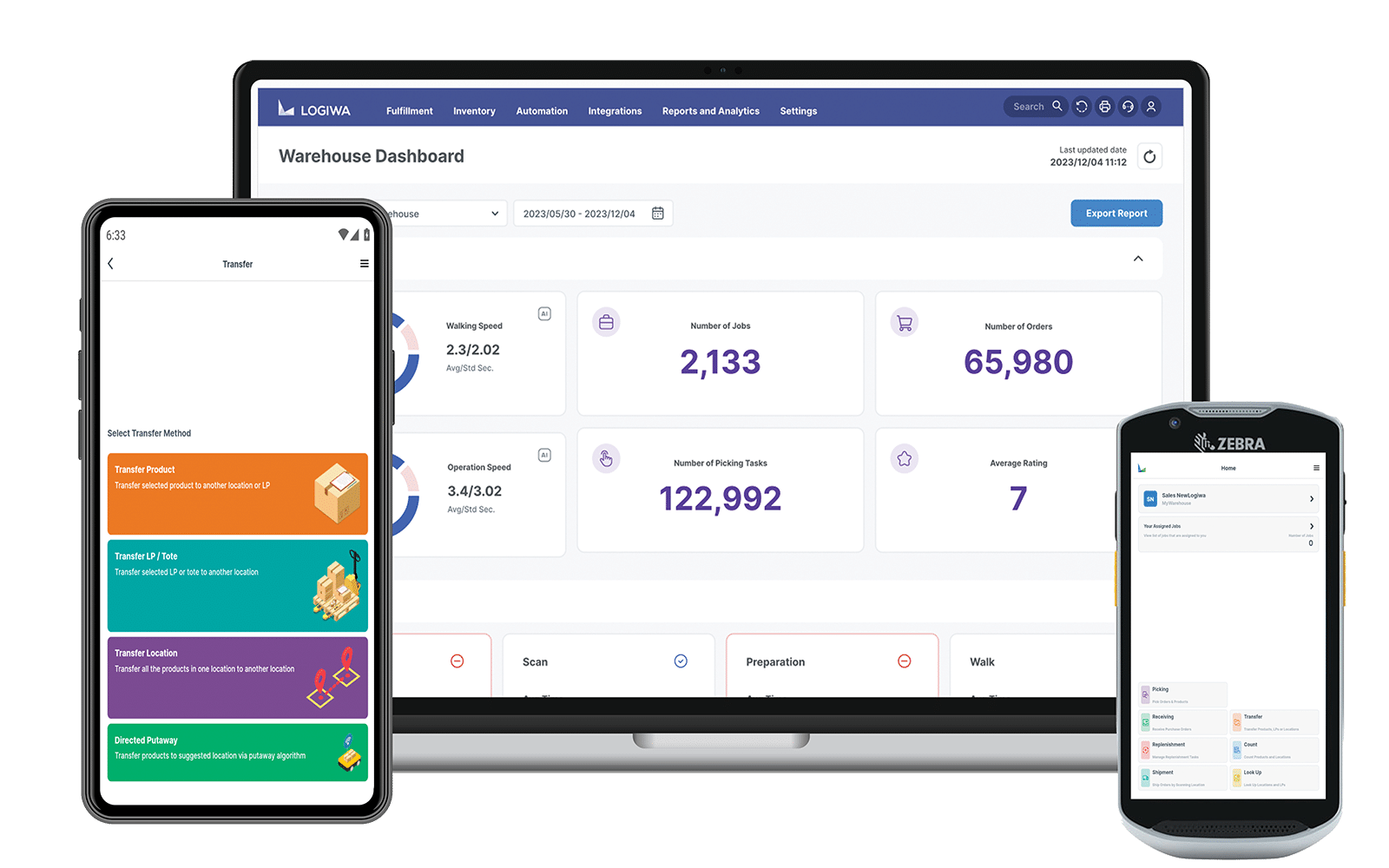Logiwa Whitepaper
Warehouse Inventory Management Software Whitepaper

Logiwa WMS Introductory Guide for High-Volume B2C/DTC Fulfillment Centers
Warehouse technology first began in the 1960s with the rise of computerized information management systems. Since then, inventory warehouse management software has become its own competitive marketspace – one that is full of optimizing solutions capable of automating inventory processes and warehouse workflows.
In recent years, however, the ecommerce boom has put these warehouse systems to the test. The COVID-19 pandemic permanently changed the way people shop and has had a lasting effect on supply chains around the world. The rise in online ordering has pushed warehouses into overdrive, and proved that many legacy systems no longer have what it takes to keep up today’s consumer trends. The only way for B2C/DTC businesses to survive has become to adopt better warehouse technology.
Complete the form below to receive this content:
As fulfillment networks continue to expand and online stores continue to replace real ones, warehouse operators are forced to re-evaluate what a “good” inventory warehouse management is. The answer? inventory warehouse management software that can meet the challenges of the future. That’s where Logiwa comes in. Logiwa WMS allows you to seamlessly connect all the information within your system to maintain accurate inventory levels and optimize efficiency. With our system, you can expect 100% fulfillment flow control.
Our team of warehouse and logistics experts have been perfecting our high-volume DTC fulfillment platform since 2004, and are experienced at scaling warehouse operations as fulfillment networks grow and technologies change. We’ve made it our mission to respond to the individual needs of each of our customers, and have optimized our inventory management capabilities to include things like automated replenishment, directed inventory transfers, and demand forecasting for managing cost.
We have continued to adapt our warehouse inventory management software to meet the changing needs of 3PLs, wholesalers & distributors, fulfillment networks, brands, online sellers, and B2B shippers. Our warehouse inventory management software is designed to resolve the gaps of other inventory warehouse management systems, eliminate inconsistency, and optimize efficiency. Our AI-powered algorithms and advanced cloud technology allow businesses to oversee all aspects of inventory management while minimizing delays and human error.
Logiwa’s “Warehouse Management Software Whitepaper” will guide you through Logiwa’s robust WMS platform and its many features, as well as how to evaluate other systems. Our comprehensive catalog of warehouse inventory management software features will help you determine if your warehouse operations are optimized to their full potential! If you’re new to inventory warehouse management, think of this as a roadmap covering all the different areas of warehouse operations and its various inbound and outbound processes.
Inside our “Warehouse Management Software Whitepaper,” you will find an overview of Logiwa’s WMS solution, including:
-
- An introduction to our company
- Order management features
- Inventory management tools and methods
- How to set up a warehouse and execute inventory putaway
- Item management solutions
- Integration options and EDI/API connectability
- Inbound and outbound processes
- Cloud accessibility and security
- Additional management features (billing, count operations, order routing, automation rules, pick-face replenishment
- Visual insights into Logiwa’s platform
Is your fulfillment center optimized? Download the guide and find out! For more insights on high-volume DTC fulfillment warehousing technology, visit www.logiwa.com or our Logiwa Resource Page.
Warehouse Inventory Management Software Whitepaper
Get the whitepaper that outlines the best practices you need to speed high-volume DTC fulfillment.

Logiwa WMS Introductory Guide for High-Volume B2C/DTC Fulfillment Centers
Warehouse technology first began in the 1960s with the rise of computerized information management systems. Since then, inventory warehouse management software has become its own competitive marketspace – one that is full of optimizing solutions capable of automating inventory processes and warehouse workflows.
In recent years, however, the ecommerce boom has put these warehouse systems to the test. The COVID-19 pandemic permanently changed the way people shop and has had a lasting effect on supply chains around the world. The rise in online ordering has pushed warehouses into overdrive, and proved that many legacy systems no longer have what it takes to keep up today’s consumer trends. The only way for B2C/DTC businesses to survive has become to adopt better warehouse technology.


